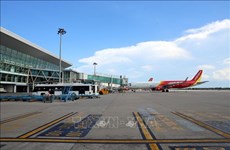Sea and island tourism gives a boost to economic development
Vietnam boasts a coastline of 3,260 km, with nearly 400 beaches and over 3,000 islands stretching from the north to the south. Many have gained international recognition.
With robust investment in infrastructure and entertainment services, beach tourism has attracted millions of visitors each year.
Seas and islands are not only a source of livelihoods but also a space for people to create sea and island culture, given the unique cultural heritages and folk festivals and customs of coastal residents. This is a rich resource for developing sustainable sea and island tourism.
Ly Son Island district in Quang Ngai province has been given the necessary focus to develop into a national sea and island tourism centre.
The south-central province of Khanh Hoa serves as an example of successful coastal tourism, as in recent years it has built upon its reputation as an attractive destination with the addition of many high-end resorts and entertainment areas. Nha Trang city in Khanh Hoa has become a marine tourism centre with diverse cultural and marine tourism offerings attracting a large number of domestic and foreign tourists.
Sea and island tourism has long been a tourism magnet, attracting over 70% of all foreign visitors to Vietnam. To develop tourism quickly and sustainably, Vietnam has defined sea and island tourism as a breakthrough measure in the development of the marine economy and a major contributor to economic development and the protection of national sovereignty.
The potential for sea and island tourism remains substantial and needs to be tapped effectively and sustainably, contributing to turning tourism into a key economic sector./.













